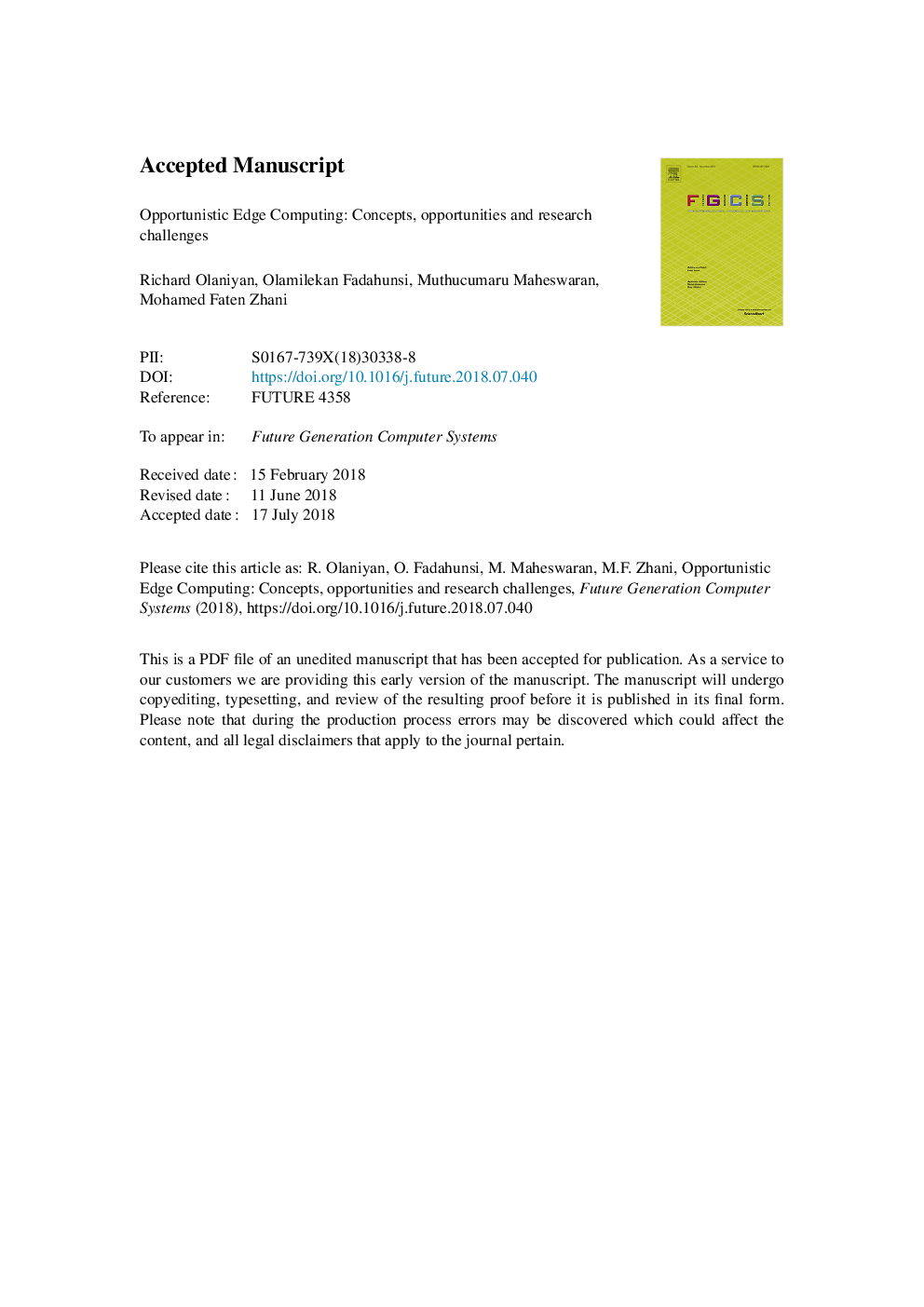| Article ID | Journal | Published Year | Pages | File Type |
|---|---|---|---|---|
| 6872854 | Future Generation Computer Systems | 2018 | 57 Pages |
Abstract
The growing need for low-latency access to computing resources has motivated the introduction of edge computing, where resources are strategically placed at the access networks. Unfortunately, edge computing infrastructures like fogs and cloudlets have limited scalability and may be prohibitively expensive to install given the vast edge of the Internet. In this paper, we present Opportunistic Edge Computing (OEC), a new computing paradigm that provides a framework to create scalable infrastructures at the edge using end-user contributed resources. One of the goals of OEC is to place resources where there is high demand for them by incentivizing people to share their resources. This paper defines the OEC paradigm and the involved stakeholders and puts forward a management framework to build, manage and monitor scalable edge infrastructures. It also highlights the key differences between the OEC computing models and the existing computing models and shed the light on early works on the topic. The paper also presents preliminary experimental results that highlight the benefits and the limitations of OEC compared to the regular cloud computing deployment and the Fog deployment. It finally summarizes key research directions pertaining to resource management in OEC environments.
Related Topics
Physical Sciences and Engineering
Computer Science
Computational Theory and Mathematics
Authors
Richard Olaniyan, Olamilekan Fadahunsi, Muthucumaru Maheswaran, Mohamed Faten Zhani,
